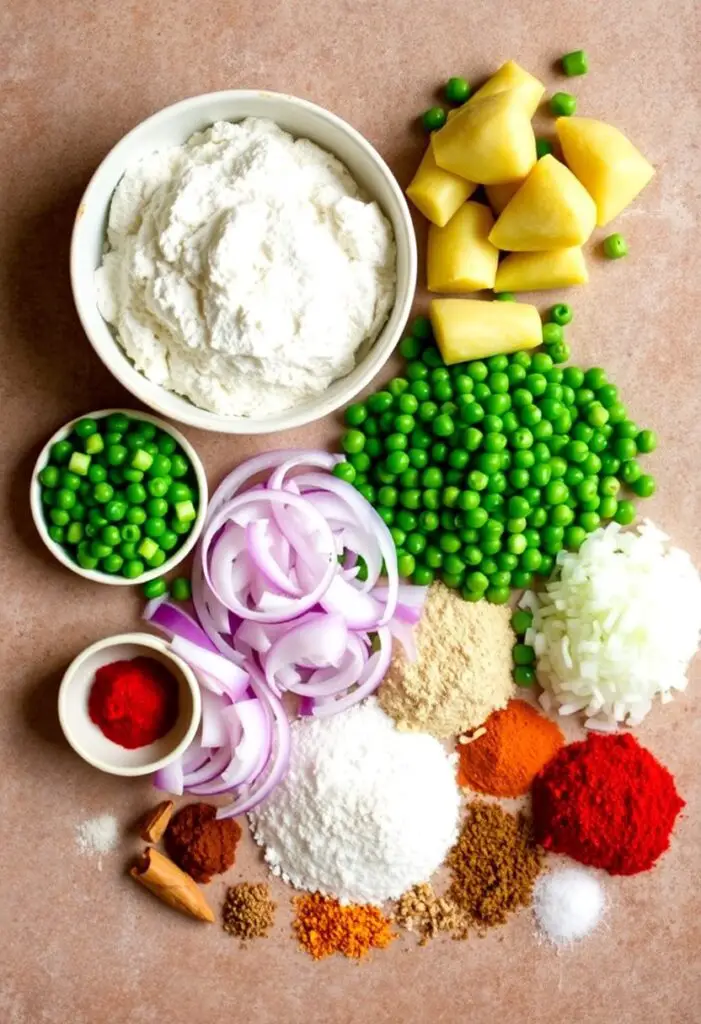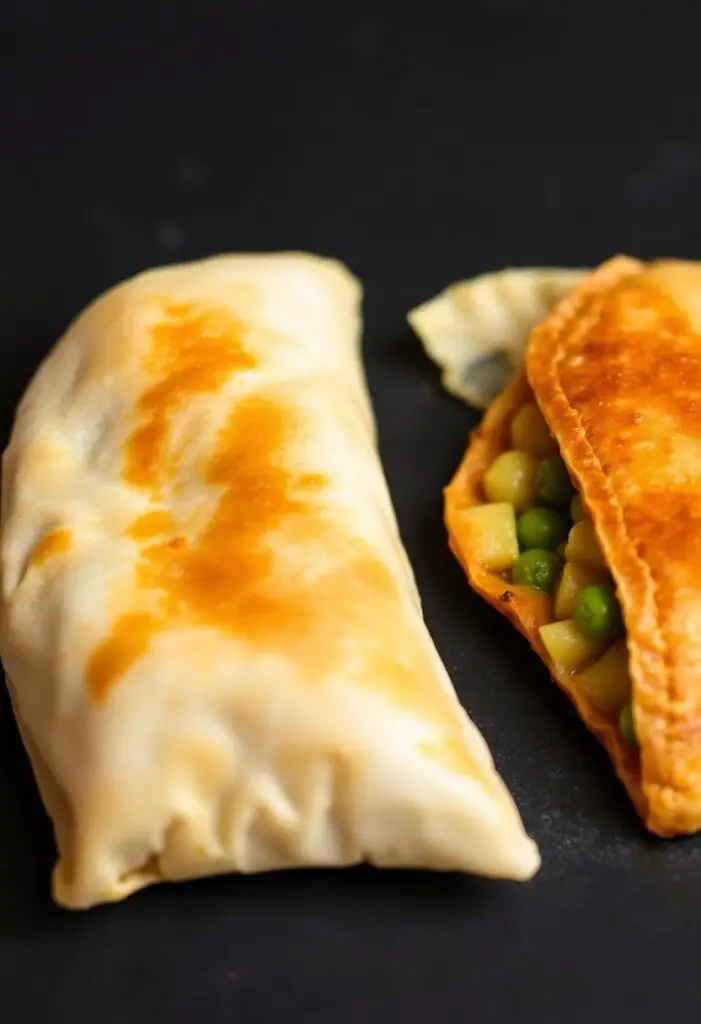How to Fold Samosas (And Become a Kitchen Origami Master)
Let’s talk about the undisputed king of savory snacks, the perfect triangular parcel of joy: the samosa. We’ve all been there, standing at a street-side stall in Khulna, watching in awe as the vendor effortlessly folds and fries these golden-brown beauties. You’ve probably thought, “I could never do that.” You imagine your attempt ending in leaky, misshapen blobs that explode tragically in the hot oil. Well, I’m here to tell you to silence that inner critic. Today, we’re demystifying the process. You are going to learn how to fold samosas, and it’s easier than you think. Get ready to unlock a new level of snack-making prowess.
Why This “Recipe” Is Awesome (It’s a Delicious Superpower)
Mastering the art of the samosa fold is less a recipe and more a life skill, a delicious superpower you can whip out to impress anyone. Why is this technique so awesome? Because it’s the key to perfectly crispy, leak-proof, and beautifully shaped samosas every single time. A properly folded samosa holds its spicy filling securely, ensuring it steams perfectly on the inside while the outside fries to a bubbly, golden-brown crunch.
This isn’t just about making food; it’s about creating an experience. Imagine serving up a platter of your own homemade, perfectly formed samosas at your next gathering. The bragging rights alone are worth it! You’ll never look at a store-bought frozen samosa the same way again.
Ingredients: Your Samosa-Building Kit
A great samosa is a team effort between the pastry and the filling. Let’s get our players ready.
For the Crispy Samosa Dough (Patti):
- 2 cups all-purpose flour (maida)
- ¼ cup vegetable oil or ghee, plus more for frying
- ½ teaspoon salt
- ½ teaspoon ajwain (carom seeds) (Optional, but adds a classic, savory aroma)
- ½ cup cold water, approximately
For the Classic Potato & Pea Filling:
- 3 medium potatoes, boiled, peeled, and roughly mashed
- 1 cup green peas, fresh or frozen
- 1 tablespoon vegetable oil
- 1 teaspoon cumin seeds
- 1 onion, finely chopped
- 1-2 green chilies, finely chopped
- 1 teaspoon grated ginger
- Spices: ½ tsp turmeric powder, 1 tsp coriander powder, ½ tsp garam masala, 1 tsp amchur (dried mango powder) for tang
- Salt to taste
- Fresh cilantro, chopped
For the Sealing Slurry:
- 2 tablespoons all-purpose flour
- 3-4 tablespoons water
Tools & Kitchen Gadgets Used: Your Folding Workshop
You don’t need a factory, just a few kitchen essentials.
- Large Mixing Bowl
- Rolling Pin
- Large, Heavy-Bottomed Pan (Kadai) or Wok (For deep frying)
- Slotted Spoon
- Medium Skillet (For cooking the filling)
- Knife and Cutting Board
- Pastry Brush (Optional, for applying the slurry)
Step-by-Step Instructions: The Art of the Fold
This is a four-act play. Don’t worry, you’re the star, and the finale is delicious.
Act 1: The Dough
- Mix It Up: In a large bowl, combine the flour, salt, and ajwain. Add the ¼ cup of oil or ghee. Using your fingertips, rub the fat into the flour until the mixture resembles coarse breadcrumbs.
- Knead It: Slowly add the cold water, a little at a time, and knead until you have a firm, stiff dough. Don’t make it soft like chapati dough! A stiff dough is the secret to a crispy, non-greasy samosa.
- Let It Rest: Cover the dough with a damp cloth and let it rest for at least 30 minutes.
Act 2: The Filling
- Sauté the Aromatics: Heat 1 tbsp of oil in a skillet. Add the cumin seeds and let them sizzle. Add the chopped onion and sauté until translucent. Add the green chilies and ginger and cook for another minute.
- Add Spices and Peas: Add all the powdered spices (turmeric, coriander, garam masala, amchur) and cook for 30 seconds. Add the green peas and cook for a few minutes until tender.
- Combine and Cool: Add the mashed potatoes, salt, and fresh cilantro. Mix everything well and gently mash a few more potatoes. Transfer the filling to a plate and let it cool down completely. Never use hot filling!
Act 3: How to Fold a Samosa (The Main Event!)
- Divide and Roll: Divide your rested dough into 6-8 equal balls. Take one ball and roll it into a thin circle (about 6 inches in diameter). Cut the circle in half with a knife. You now have two semi-circles.
- Form the Cone: Take one semi-circle. Apply the flour-water slurry along the straight edge with your finger or a brush.
- The Magic Fold: Fold the semi-circle to create a cone shape, overlapping the edges where you applied the slurry. Press the seam firmly to seal it shut. You should now have a little cone-shaped pocket.
- Stuff It: Hold the cone in your hand and fill it about two-thirds full with your cooled potato filling. Don’t overstuff it!
- Seal the Deal: Apply a little more slurry around the inside rim of the cone’s opening. Press the two open edges together firmly to seal the samosa completely. You should have a perfect, plump triangle. You can even add a little pleat on one side before sealing for that classic street-style look. Place the finished samosa on a plate and cover it with a cloth while you form the rest.
Act 4: The Golden Fry
- Heat the Oil: Heat about 2-3 inches of oil in your kadai or wok over medium-low heat. The oil should be warm, not screaming hot. A small piece of dough dropped in should sizzle gently and rise slowly.
- Low and Slow: Gently slide 3-4 samosas into the oil. Fry them on low to medium-low heat for 10-15 minutes, turning them occasionally, until they are golden brown and crispy on all sides. Frying them slowly is the key to a bubbly, crisp crust.
- Drain and Serve: Remove the golden samosas with a slotted spoon and drain them on a wire rack or paper towels. Serve hot with your favorite chutney!
Calories & Nutritional Info (Per Samosa, Estimated)
Let’s be real, this is a delicious, fried indulgence. Enjoy it!
- Estimated Calories per samosa: ~250-300 calories
- Fat: ~15g
- Carbohydrates: ~25g
- Protein: ~4g
Common Mistakes to Avoid: Sidestep These Samosa Saboteurs!
Avoid these common pitfalls for samosa supremacy.
- Dough is Too Soft: A soft, pliable dough will absorb a lot of oil and won’t be crispy. You need a firm, stiff dough.
- Hot Filling: Using hot or even warm filling will make the dough soggy from the inside and can cause it to tear. Let your filling cool completely.
- Overstuffing: It’s tempting, I know. But overstuffing is the #1 cause of samosas bursting open in the oil. Fill them just two-thirds full.
- Oil is Too Hot: If your oil is too hot, the outside of the samosa will brown instantly while the inside remains raw. This also leads to a less crispy, bubbly crust. Fry them low and slow.
Variations & Customizations: The Samosa Spectrum
The classic potato filling is just the beginning!
- Spicy Keema Samosa: Create a savory filling with cooked minced meat (chicken, beef, or mutton), onions, ginger, garlic, and spices.
- Paneer & Corn Samosa: A delicious vegetarian filling made with crumbled paneer (Indian cheese), sweet corn, and mild spices.
- Narkel Shingara (Sweet Coconut Samosa): A popular sweet version here in Bangladesh! Make a filling with grated coconut, sugar or jaggery, and a hint of cardamom.
FAQ Section: All Your Folding Frustrations, Answered
You’ve got questions about this kitchen origami. I’ve got answers.
- Q: Why did my samosas burst open while frying? A: Usually, this is because they were overstuffed or the seams weren’t sealed properly. Make sure you press those edges together firmly!
- Q: Why aren’t my samosas crispy? A: Two likely culprits: your dough was too soft, or your frying oil was not at the right temperature (either too hot or not hot enough). A stiff dough and a slow, steady fry are key.
- Q: Can I use store-bought spring roll wrappers? A: You can, and it’s a popular shortcut! The texture will be different—thinner and crispier, more like a spring roll—but it’s still delicious.
- Q: Can I make samosas ahead of time? A: Yes! You can assemble the raw samosas, place them on a tray in a single layer, and freeze them. Once frozen, transfer them to a freezer bag. You can fry them directly from frozen; just add a few extra minutes to the cooking time.
- Q: Can I bake samosas instead of frying them? A: You can, but they won’t have the same bubbly, crispy texture. To bake them, brush them lightly with oil and bake at 400°F (200°C) for 20-25 minutes, flipping halfway through, until golden brown.
- Q: How do I get those little bubbles on the crust? A: The secret is in the dough! Rubbing the fat (ghee or oil) into the flour well (the moyan step) and frying on a consistent low-to-medium heat helps create those beautiful blisters.
- Q: My dough is too dry and crumbly. What do I do? A: Add water a tiny bit at a time—literally, a teaspoon at a time—and continue to knead until it just comes together. Remember, you want it to be stiff!
Final Thoughts: You Are Now a Samosa Sensei
You’ve done it! You’ve mastered the cone, conquered the seal, and achieved the perfect golden fry. You are now a purveyor of perfect pyramids of pleasure, a master of kitchen origami. Go forth, fill your home with the incredible aroma of fresh samosas, and never again be intimidated by this beloved snack. Your local snack corner might just wonder where you’ve been.


